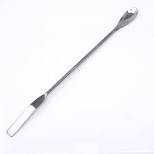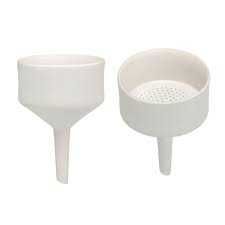![]()
![]()
![]()
Use LEFT and RIGHT arrow keys to navigate between flashcards;
Use UP and DOWN arrow keys to flip the card;
H to show hint;
A reads text to speech;
91 Cards in this Set
- Front
- Back
|
What is safety? |
state of being “safe” Protected from harm or other non desirable outcomes |
|
|
What french word was safe derived from? |
French word sauf |
|
|
What is the condition of being protected from harm or other non-desirable outcomes. |
Safety |
|
|
What are the most important instructions |
Safety precaution |
|
|
What is the 1st safety precaution |
Goggle or protective eye equipment must be worn at all times |
|
|
2nd safety precaution |
- Shoes or similar adequate foot covering must be worn - Avoid wearing easily combustible or especially loose fitting clothing - hair nets or a change in hair style should be used to minimize the danger presented by very long hair. |
|
|
3rd safety precaution |
Protective laboratory aprons or coats are generally required. Note the location of fire extinguishers and other protective equipment such as eyewashing fountains, showers, and fire blankets. |
|
|
4th safety precaution |
Do not taste anything in the laboratory. Do not eat or drink anything in the laboratory |
|
|
5th safety precaution |
Always read instructions carefully. If you are in doubt, ask your instructor. |
|
|
6th safety precaution |
Do not work in the laboratory alone |
|
|
7th safety precaution |
Never perform unauthorized experiments. |
|
|
8th safety precaution |
Keep tabletops clean |
|
|
9th safety precaution |
If you find it necessary to obtain liquid chemicals from a stockroom, a plastic bucket should be used to carry such containers of liquids between the stockroom and the laboratory. |
|
|
10th safety precaution |
Unless specifically directed to do so, never return chemicals to reagent bottles or other containers. If you have an excess of a reagent, discard it. |
|
|
11th safety precaution |
Do not bring such liquids near flames. Do not pour flammable liquids down a sink |
|
|
the amount of space taken by an object |
Volume |
|
|
measure of an object’s ability to hold a substance |
Capacity |
|
|
Precision equipment for measuring volume |
volumetric flasks, pipets, and burets and even graduated cylinder |
|
|
What is the correct way to read the volume of a liquid? |
hold or position the glassware in a vertical position at eye level and look at the meniscus of the liquid. |
|
|
It is curved, with rather flat part in the center of the water surface |
Meniscus |
|
|
an elongated glass tube having a delivery tip at the lower end and an opening for suction at the upper end. |
Pipet |
|
|
How many secs do you need to wait for to properly drain pipet |
10 seconds are counted off to permit the walls to drain properly |
|
|
How to permit liquid to flow down along without splashing into the receiver? |
a stirring rod is held against the mouth of the vessel |
|
|
Types of balance found in the laboratory are: |
platform balance, single-pan balance, top-loading balance and analytical balance. |
|
|
What occurs when substances in a solution interact to form a solid that is soluble or only very slightly soluble in the solvent, |
Precipitation |
|
|
Allow the mixture to stand until the solid or precipitate has settled, then carefully pour off the liquid down a stirring rod, leaving the solid behind. |
Decantation |
|
|
What is the liquid above the precipitate is called? |
Supernatant liquid |
|
|
process of separating a solid-liquid mixture by passing through a barrier with fine pores, such as the filter paper. |
Filtration |
|
|
The clear liquid passing through the filter paper is called? |
Filtrate |
|
|
a technique which involves the application of centrifugal force to separate particles from a solution according to their size, shape, density, viscosity of the medium and rotor speed |
Centrifugation |
|
|
overcome the attractive forces of neighboring molecules and escape from a liquid surface into the gaseous or vapour state. |
Evaporation |
|
|
The material that remains after evaporation is called? |
Residue |
|

Identify |
Triple beam balance |
|

Identify |
Platform balance |
|

Identify |
Ring stand |
|

|
Tripod |
|

|
Wire gauze |
|

|
Clay triangle |
|

|
Wash bottle |
|

|
Bunsen burner |
|

|
Tirrill burner |
|

|
Test tube rack |
|

|
Spatula |
|

|
Crucible |
|

|
Buret clamp |
|

|
Test tube brush |
|

|
Watch glass |
|

|
Pinch cock clamp |
|

|
Mortal and pestle |
|

|
Extension clamp |
|

|
Crucible tongs |
|

|
Evaporating dish |
|

|
Test tube clamp |
|

|
Beaker |
|

|
Erlenmeyer flask |
|

|
Florence flask |
|

|
Volumetric flask |
|

|
Distilling flask |
|

|
Filter flask |
|

|
Buchner funnel |
|

|
Separatory funnel |
|

|
Wide-mouth bottle |
|

|
Reagent bottle |
|

|
Graduated cylinder |
|

|
Volumetric pipet |
|

|
Buret |
|

|
Condenser |
|
|
What is the color of the precipitate formed in experiment 1 |
Reddish brown precipitate Fe(OH)3 |
|
|
How to prepare a filter paper? |
Fold it in half along one diameter and then quarters. Tear off a comer of the folded paper and open it into a shape of a cone with and thickness on one side and three thickness on the other side |
|
|
State the proper way of heating liquids using test tube |
point the open end of the tube away from yourself and others. Tilt the test tube and heat near the top of the liquid first. Never heat the bottom of a test tube that contains liquids. |
|
|
Which is a more accurate volume-measuring instrument, a graduated pipet or a graduated cylinder? |
Graduated pipet |
|
|
Which is more efficient method of separating solids from liquids by filtration or by decantation? Why? |
Filtration is more efficient because it utilizes a filter that separates small particles from the filtrate that may not settle properly during decantation. |
|
|
Balanced equation of the precipitation |
FeCl3+3NaOH→Fe(OH)3+3NaCl |
|
|
Balanced equation of evaporation |
B |
|
|
If the size of the precipitate is smaller than pores of the filter paper, the paper cannot retain the precipitate. Give two separation methods that may overcome this difficulty |
Evaporation and centrifugation |
|
|
Title of exercise no. 1 |
Precautions and the chemical laboratory |
|
|
What can be used to efficiently smother a fire? |
Wet paper towels |
|
|
What to do when your clothing catches on fire? |
Smother with blanket or heavy coat. You can also use the shower but if your too far you can roll over. |
|
|
What to do if chemicals get into you eyes. |
Wash for a couple of minutes with eyewash fountain |
|
|
What do you add to prevent chemicals from damaging your clothing |
Sodium bicarbonate |
|
|
Precaution when heating glasses. |
Make sure its borosilicate glass. |
|
|
What to do before inserting glass tubes through stoppers? |
Lubricate |
|
|
What is used for suction in pipets |
Pipet bulb |
|
|
What to use when toxic fumes are being produced? |
Use a fume hood |
|
|
How to obtain volume with buret |
Take the difference between the initial and final readings |
|
|
How to use pipet |
Suction water with pipet bulb past the ring mark. Then, remove the rubber bulb aspirator and replace it with you finger tip. Then roll you fingertip to drain the liquid until it reaches the ring mark. |
|
|
Four types of balances. |
Platform balance, single-pan balance, top-loading balance, analytical balance |
|
|
What is the weight of the container when empty called? |
Tare weight |
|
|
The weight of the container and the sample is called? |
Gross weight |
|
|
Weight of only the sample |
Net weight |
|
|
What are the common laboratory operations tackled? |
Volume measurement, Weighing, heating, evaporation, precipitation, decantation, filtration, and centrifugation |

